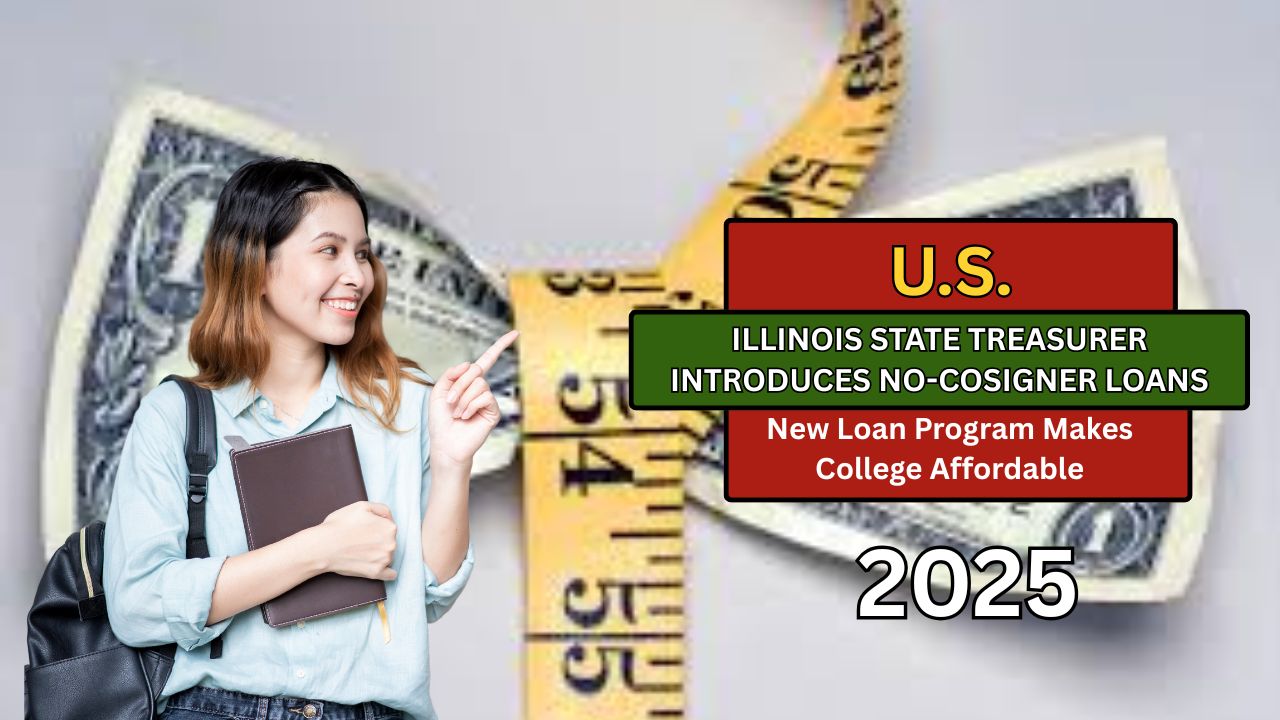As the cost of higher education continues to rise, Illinois students are being offered a new way to finance their college education through a groundbreaking initiative. Illinois State Treasurer Michael Frerichs has introduced the Funding U Illinois No-Cosigner Loan, a program designed to help students who may not have access to traditional forms of financial aid or a creditworthy cosigner.
What Is the No-Cosigner Loan?
The Funding U Illinois No-Cosigner Loan is a financial product aimed at Illinois residents who are attending public or private not-for-profit colleges and universities in the state. Unlike conventional student loans, this program does not require a cosigner, making it accessible to students who may otherwise struggle to secure private loans due to a lack of credit history or financial support.
The initiative is part of the broader Student Empowerment Fund, a program launched by Treasurer Frerichs to provide affordable financial assistance to students. This loan is particularly targeted toward first-generation college students, those from low-income families, or students who have exhausted other avenues of financial aid.

Key Features of the Illinois No-Cosigner Loan
- No Cosigner Required: Unlike most private loans, which often require a cosigner with a solid credit history, this loan eliminates that barrier. Students can apply without the need for a cosigner, making it more inclusive for individuals with limited access to financial resources.
- Interest Rates: The loan offers fixed Annual Percentage Rates (APR) ranging from 7.99% to 9.49%, which are relatively competitive compared to traditional private loans.
- Flexible Loan Terms: Students have the flexibility to make in-school payments and benefit from no fees on the loan. The terms are designed to accommodate the unique financial challenges of students, offering a more affordable way to manage education costs.
- Target Audience: The program is aimed at first-generation students, those who have limited access to private loans, or individuals who have already tapped out other forms of financial assistance, such as federal student loans or scholarships.
- Loan Amount: The loans offered under this initiative vary in amounts, with the average loan totaling around $21,000. Since its inception in 2023, the Student Empowerment Fund has distributed nearly $10.8 million in loans to students across Illinois.
A Broader Effort to Empower Students
In his announcement, Treasurer Frerichs emphasized that the program was designed to focus on students’ academic achievements and dedication rather than their credit history. The aim is to empower students who might otherwise be overlooked by traditional lending institutions.
“Education is one of the most important investments a person can make in their future,” Frerichs said. “We want to provide an option for students who have worked hard in school but may not have access to credit or family support to borrow responsibly and achieve their educational goals.”
The program has already helped hundreds of students across the state. The Student Empowerment Fund has issued nearly 700 loans to students at a variety of institutions, with some of the most common schools receiving funding being Illinois State University, Augustana College, the University of Illinois, Lewis University, and Southern Illinois University.
Why This Loan Matters
The Funding U Illinois No-Cosigner Loan addresses a growing gap in student loan options. Many students are caught in a difficult situation where they either don’t have access to cosigners or their family members may not have the financial stability to back them up.
Traditional private lenders often require cosigners with strong credit histories, which presents a significant barrier to students from lower-income backgrounds. By offering a no-cosigner loan, Illinois is providing a much-needed solution for those students.
Moreover, the loan product is designed to be flexible, allowing students to manage their payments while in school and keeping fees at bay.
This is an important consideration, as many students struggle with the burden of accumulating debt during their academic journey, especially when they are not receiving sufficient financial support.
The Growing Need for Financial Assistance
The rising cost of education is a major challenge for students in Illinois and across the country. With tuition fees escalating, many students are relying more heavily on student loans to finance their education. According to a recent report by the Illinois Student Assistance Commission (ISAC), students in Illinois are graduating with an average student loan debt of over $30,000.
These figures underscore the importance of innovative programs like the Funding U Illinois No-Cosigner Loan, which offer more accessible and affordable options for students trying to manage the financial strain of a college education.

Applying for the Funding U Loan
Students interested in applying for the Funding U Illinois No-Cosigner Loan can visit the official website of the Student Empowerment Fund. The application process is designed to be straightforward, with no hidden fees and a transparent approval system. The program’s eligibility requirements include being an Illinois resident and attending a recognized not-for-profit educational institution within the state.
For further information and to apply for the loan, students can visit the official website: Student Empowerment Fund.
Conclusion
The Funding U Illinois No-Cosigner Loan represents an important step in addressing the financial challenges faced by students in Illinois. By offering an option that does not require a cosigner,
Treasurer Frerichs is helping level the playing field for students who may not have the financial support traditionally needed for higher education. .
As more students seek financial assistance for college, such programs are critical in ensuring that higher education remains accessible and attainable for everyone.
This article has been carefully fact-checked by our editorial team to ensure accuracy and eliminate any misleading information. We are committed to maintaining the highest standards of integrity in our content.

Deepak Grover is a dedicated content writer at OTE News, specializing in government affairs, public policy, and current events. With a keen eye for detail and a passion for factual reporting, he ensures readers receive accurate and insightful news. Deepak holds a degree in Political Science and has experience in research-driven journalism.
When not writing, he enjoys reading historical books, exploring hiking trails, and staying updated with global political trends. His commitment to ethical journalism makes him a trusted voice at OTE News.




